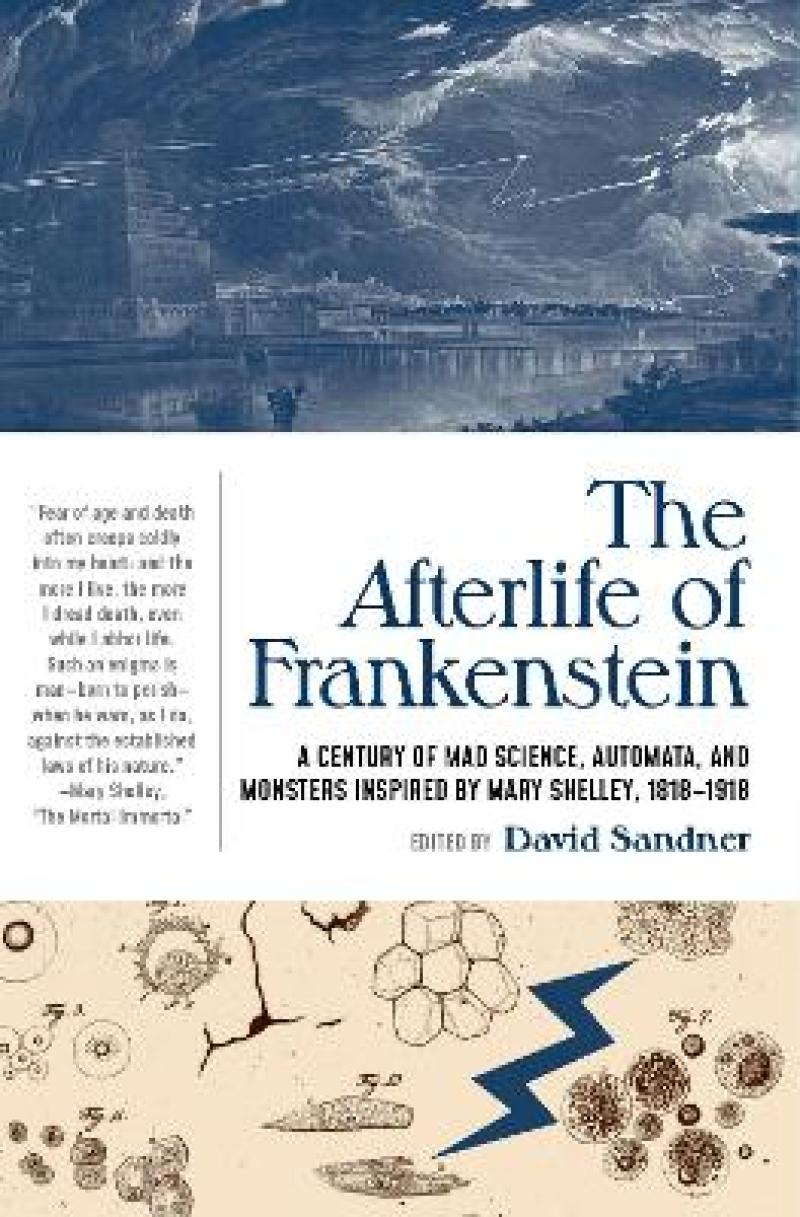<p>“Mary Shelley’s <i>Frankenstein </i>has been a literary lightning bolt, striking the imagination of other writers since its first publication in 1818. Sandner’s massively important anthology shows just how influential Shelley has been on her successors, single-handedly shaping much of the science fiction and horror genres as we know them today . . . Educators and genre fans alike will appreciate having [The Afterlife of Frankenstein] on their shelf, so they can bring the creature back to life in its various incarnations, again and again, at will.” —<b>Michael Arnzen, Bram Stoker Award-winning author of <i>Grave Markings</i> and <i>Proverbs for Monsters </i></b></p><p>"<i>The Afterlife of Frankenstein</i> is a treasure trove of truly remarkable stories. This entertaining and illuminating anthology presents a fascinating portrait of English and American literature in the wake of Mary Shelley’s <i>Frankenstein </i>and is not to be missed by anybody interested in the literature of the fantastic.” —<b>Jacob Weisman, World Fantasy Award-winning editor of Invaders and <i>The New Voices of Fantasy</i> </b></p>
In this anthology, scholar of the fantastic David Sandner explores the first hundred years of Frankenstein’s influence.
Dr. Frankenstein’s monster is one of the most iconic figures in English literature, popularized through decades of writing, film, and comedy. But even before the invention of film, Mary Shelley’s Frankenstein profoundly impacted scores of writers, gathering force for the genre that would ultimately become what we know as science fiction.
This collection of short stories and excerpts from work published between 1818 to 1918 demonstrates what a pioneering myth Frankenstein has always been—from the very day when lightning first struck and it opened its eyes on the world.
“Fear of age and death often creeps coldly into my heart; and the more I live, the more I dread death, even while I abhor life. Such an enigma is man—born to perish—when he wars, as I do, against the established laws of his nature.” –Mary Shelley, The Mortal Immortal
Part One
Of Creatures and Monsters
“The Vampyre” (1819), John William Polidori
“Fragment” (1819), Lord Byron
Excerpt from Presumption; or, The Fate of Frankenstein (1823), Richard Brinsley Peake
“The Monster Made by Man” (1825), Anonymous
Excerpt from The Mummy! (1827), Jane Webb
“Goblin Market” (1862), Christina Rossetti
Part Two
Byronic Heroes and Sympathetic Monsters
“Roger Dodsworth: The Reanimated Englishman” (1826), Mary Shelley
“The Mortal Immortal” (1833), Mary Shelley
Excerpt from Wuthering Heights (1847), Emily Brontë
Excerpt from Mary Barton (1848), Elizabeth Gaskell
Excerpt from Great Expectations (1861), Charles Dickens
Excerpt from The Sport of the Gods (1902), Paul Laurence Dunbar
Part Three
Mad Science!!!
“The Facts in the Case of M. Valdemar” (1845), Edgar Allen Poe
Excerpt from The Strange Case of Dr. Jekyll and Mr. Hyde (1886), Robert Louis Stevenson
“The Monster-Maker” (1887), W. C. Morrow
Excerpt from The Island of Dr. Moreau (1896), H. G. Wells
“A Thousand Deaths” (1899), Jack London
“The Third Drug” (1908), Edith Nesbit
Part Four
From Automatons to Robots
“The New Frankenstein” (1838), Anonymous (attributed to William Maginn)
Excerpt from The Steam Man of the Prairies (1868), Edward S. Ellis
“The New Mother” (1882), Lucy Lane Clifford
“The Dancing Partner” (1893), Jerome K. Jerome
“A Wife Manufactured to Order” (1895), Alice W. Fuller
“The Lady Automaton” (1901), E. E. Kellett

